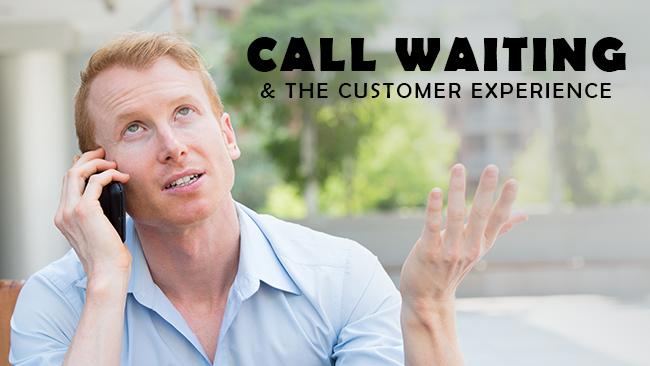Call Waiting & the Customer Experience
Today, customer service trends are driven by the need to meet consumer expectations. However, the evolution of technological innovation together with the emergence of the Millennial consumer has led to quickly changing expectations.
No matter the channel, just having a presence isn’t enough. Consumers expect quick service and a timely resolution to their problem. In other words, they do not like delays, and most of all, customers hate being put on hold. At the front line for handling many types of customer inquiries is the call center, and it significantly contributes to a company’s success by increasing customer loyalty and enforcing its brand. At the same time, one of the easiest ways to create a poor impression of your company and lose customers is through a negative call center experience. In fact, according to YouGov, 76% of consumers said that just one unpleasant contact center experience was likely to make them take their business elsewhere. Therefore, the first step to improving customer satisfaction and loyalty means reducing time spent on hold and providing alternative solutions to deliver the best possible customer experience.
Please Hold, Someone Will Be with You Shortly
While hold time is consistently at the top of the list of things that can ruin the call center experience for customers, the reality is an average of 57% of all calls today are being put on hold, so it begs the question, how long is too long? A recent survey by live chat provider Velaro indicated that 60% of people would hang up after waiting on hold for only one minute and 34% of those callers will not call back. That’s a huge problem because the average time a customer spends on hold is closer to 90 seconds, and for some industries, it’s a lot longer. According to the same study, one-third of customers believe that customer service departments should be answering immediately, with no hold time whatsoever. Unfortunately, this makes it tough for companies to meet customer expectations as customers are often frustrated before they have had the chance to speak with someone, including the psychological factor where the perceived negative experience makes customers even overestimate how long they have been on hold. At the same time, it immediately puts the call agent in damage control mode instead of solving the customer’s original issue. This same trend is occurring within the B2B sector, and no matter how short the hold period is, customer satisfaction suffers from the very beginning. So, what’s the solution?
Solutions: The Power of Choice
While many businesses may feel that they just don’t have the resources or the knowledge of how to rescue their customers from log wait times, companies that are looking to improve their customer experience management strategies need to start by finding solutions. The common-sense approach would be ensuring an appropriately-sized staff to manage to manage the amount of call volume, while, at the same time, implementing proper call routing software that delivers the call to the correct agent, department, etc., efficiently.
However, while hiring more customer service staff is one way to address the problem, it’s not the most cost-effective one since there are always down times when having additional call agents available who sit idly is unnecessary. Therefore, instead of focusing on preventing inevitable wait times, some companies are deploying more alternative solutions that help customers tolerate the wait. For example, music combined with constant hold time updates that tell the consumer how long they have left to sit on hold. This gives the customer the information they need to make their choice whether to remain on hold or call back again at another time. Also, did you know that customers left on-hold without any background music felt that a 30-second on-hold call lasted 90 seconds, while customers thought a 30-second on-hold call that used music-on-hold lasted only 15 seconds?
One of the most practical, and cost-effective potential solutions is the callback. Instead of staying on hold, a customer leaves their contact information and receives a call from a customer service representative as soon as one becomes available, (assuming they call back). Not surprisingly, this is an option that appeals to many customers as 63% of people would prefer a callback to waiting on hold, and 28% would prefer a callback to spending just one minute on hold. Once again, the callback is an effective solution because it gives the customer the freedom to go about their business while they wait, and avoids altogether the extra frustration caused by the hold experience.
Many organizations are implementing an alternative option to waiting on hold. Visual IVR is a support platform that guides inbound callers to a web-based support experience – personalizing the support journey for customers already on their way to the queue. By pivoting an inbound call to a digital interaction, Jacada Visual IVR allows you to surface all of your digital assets, in a single location, to your voice callers. The pivot to digital self-service often eliminates the need for the customer to connect with a live person, saving time and money for both the caller and the company.
In the end, the foundation of any positive customer experience today is the impression that you value their time. If you are up to the challenge, the results will speak for themselves.
Source: Jacada


Leave a Comment